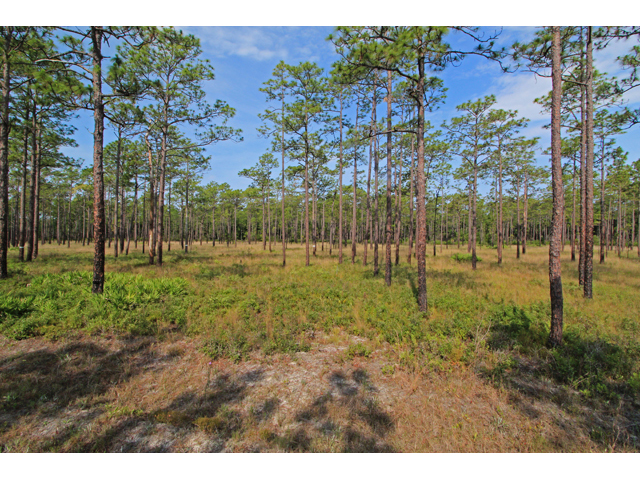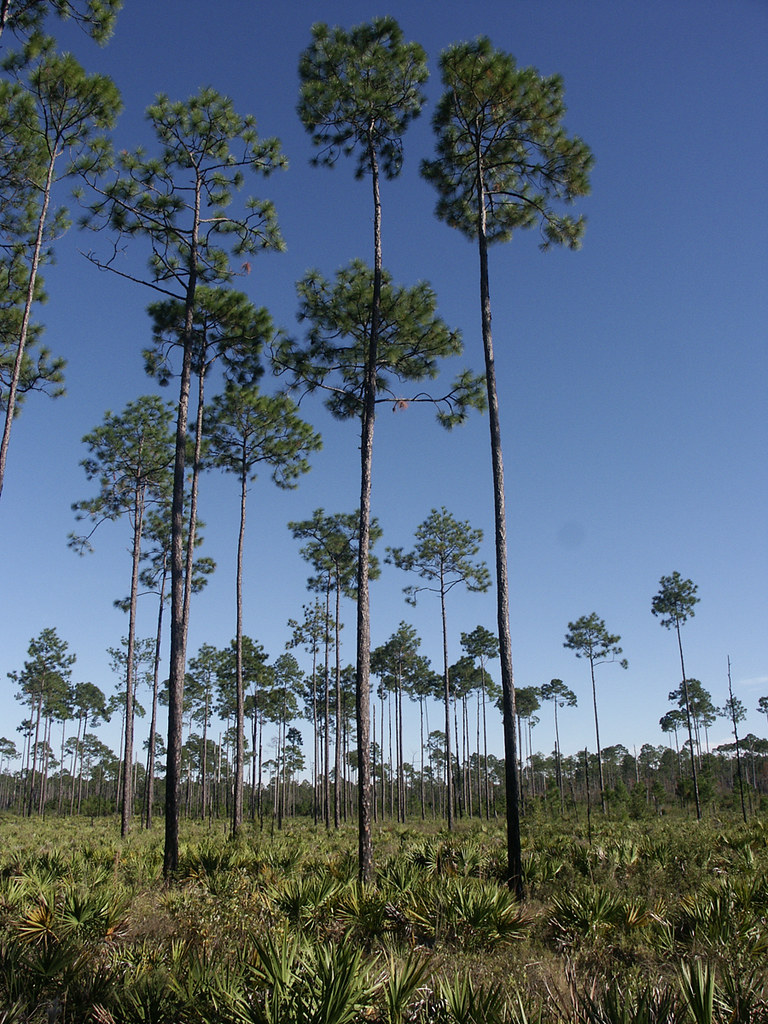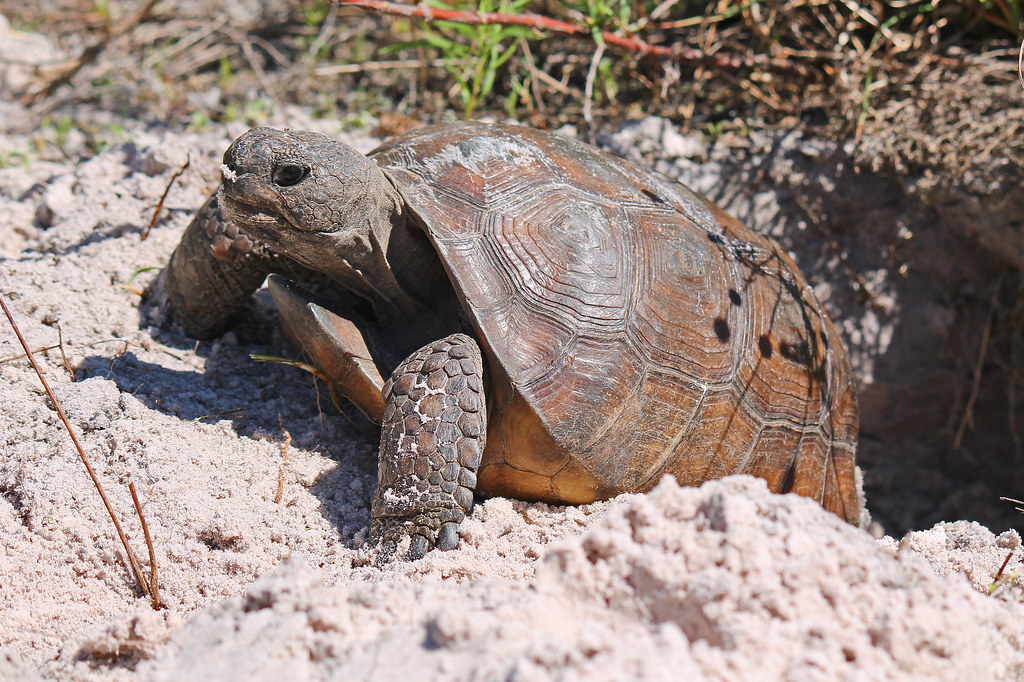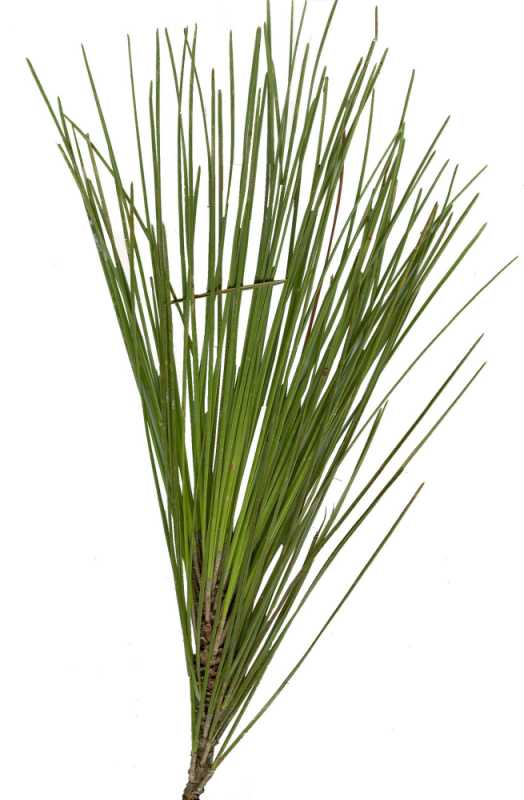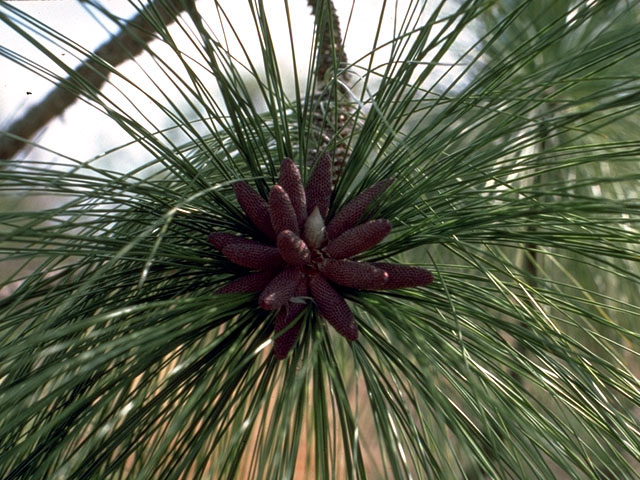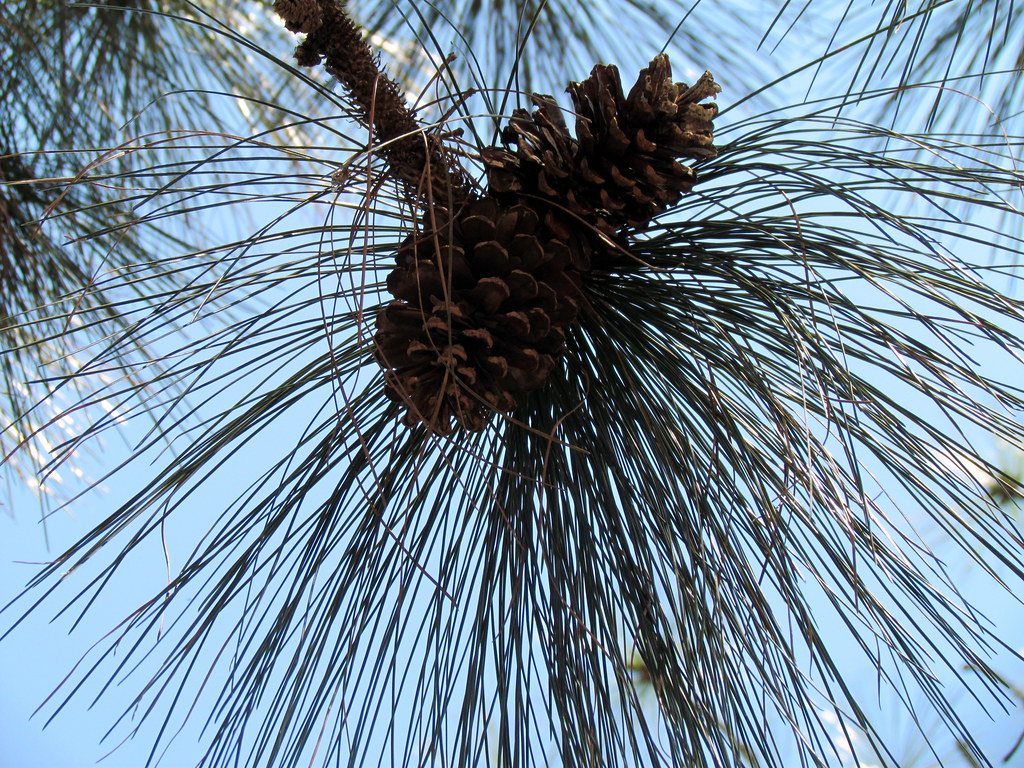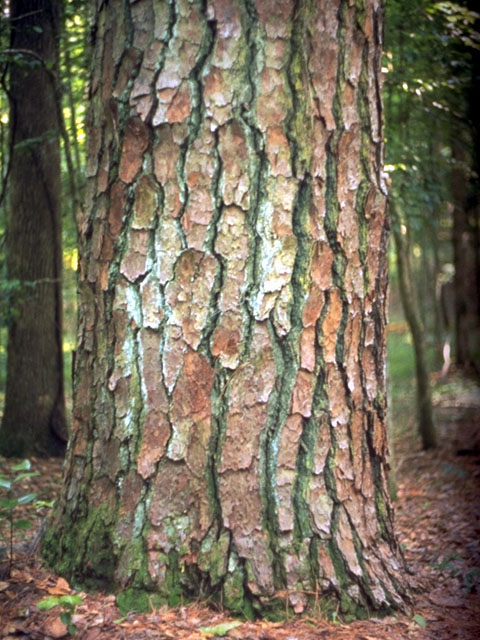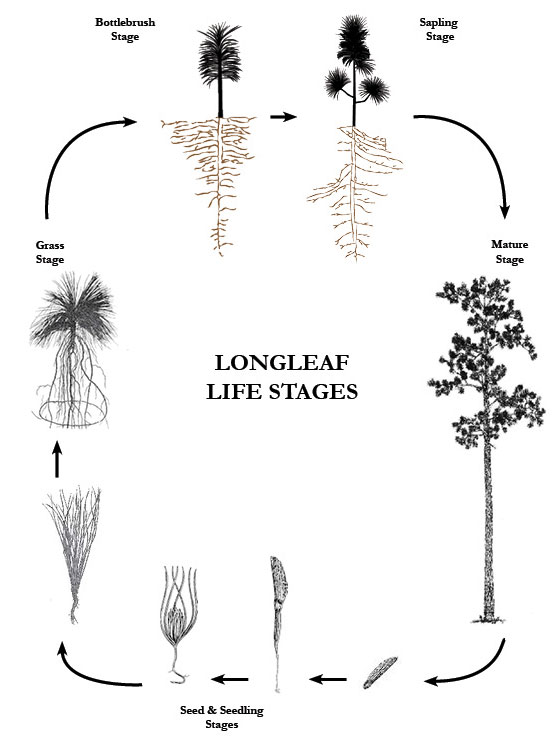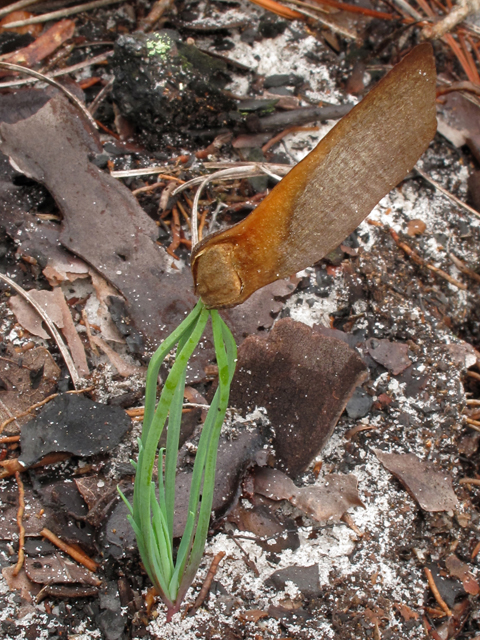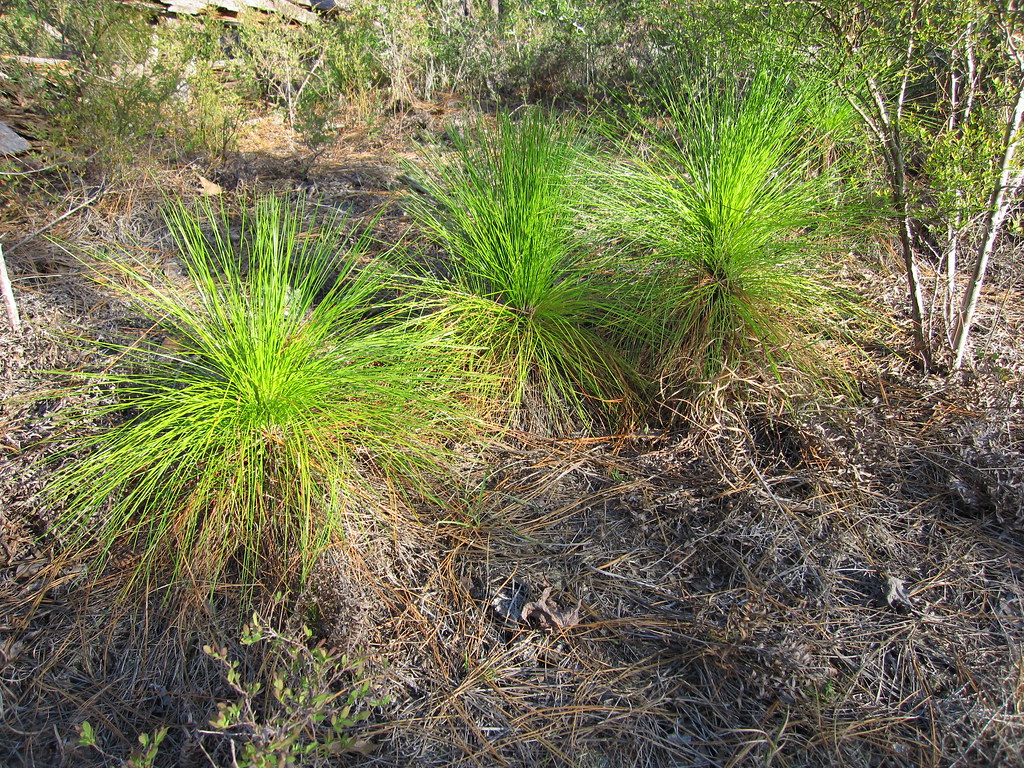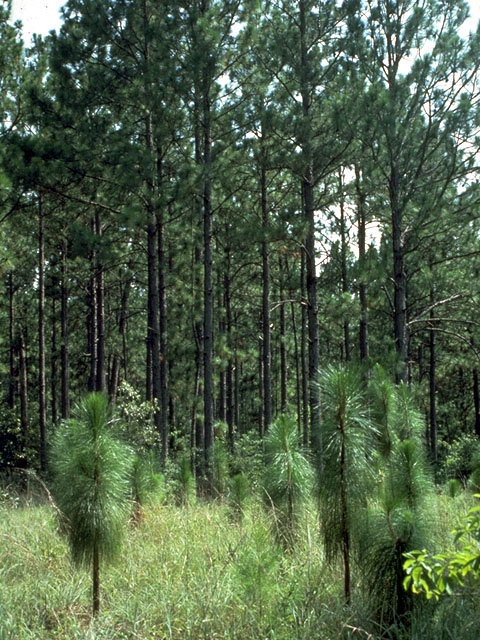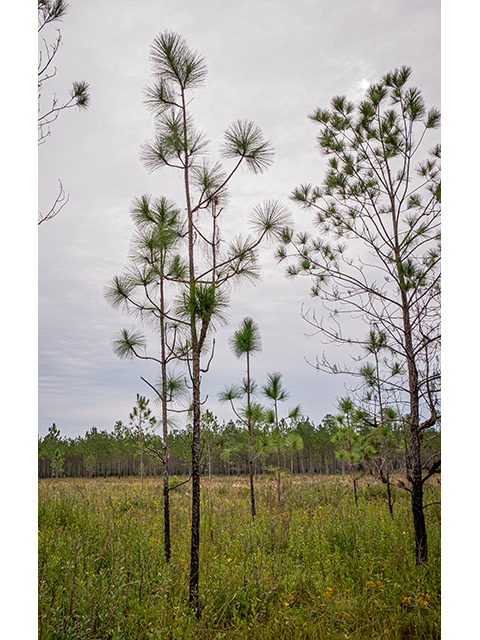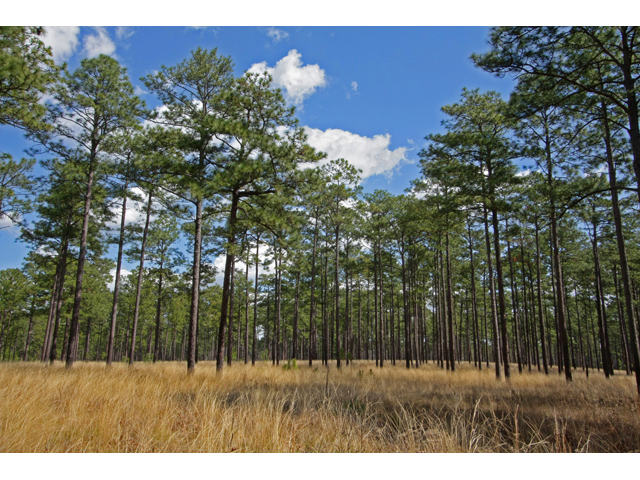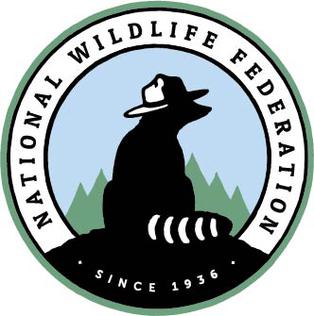Dig into Plants: Longleaf Pine
| Longleaf Pine Other Common Names: Southern pine, Georgia pine, Longleaf yellow pine, Longstraw pine, Southern yellow pine Scientific Name: Pinus palustris Native to Alabama: Yes |
|
Longleaf Pine Stand Lady Bird Johnson Wildflower Center - Benny Simpson Click on image to enlarge it |
Learn more about...
| Other Plants Found in Alabama with Similar Ecological Benefits: |
|||||
| Shortleaf pine (Pinus echinata) |
Loblolly pine (Pinus taeda) |
||||
|
|
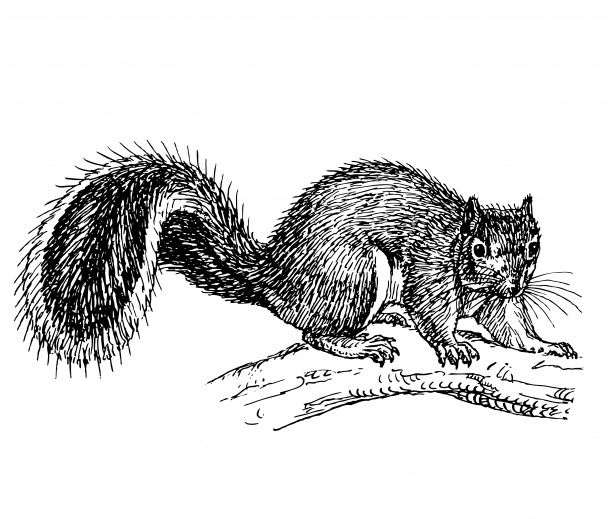 |
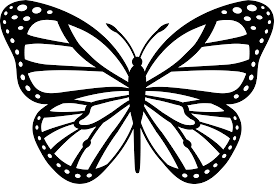 |
 |
 |
|
| Virginia pine (Pinus virginiana) |
Slash pine (Pinus elliottii) |
||||
 |
 |
 |
|||
| Sand pine (Pinus clausa) |
Pond pine (Pinus serotina) |
||
 |
 |
||
| Maintenance Notes | ||
|
 |
|
|
||
| Habitat Requirements | |||
| This plant prefers: | |||
|
Full Sun
(6+ hours of sun per day) |
 Average Watering |
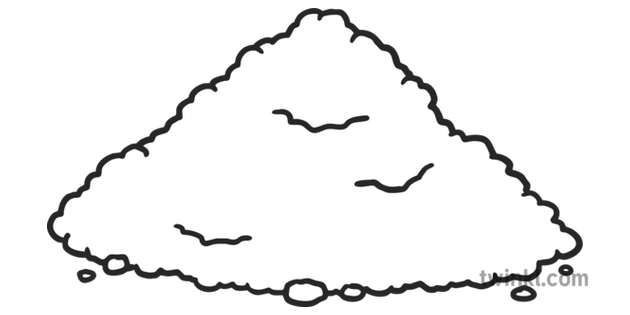 Well-drained, Sandy, Loamy, Clay, Well-drained, Sandy, Loamy, Clay, or Acidic Soil |
|
| Leaf, Flower & Seed Identification | ||||
| LEAF DESCRIPTION |
Longleaf Pine Leaves
Wikimedia - Rasbak Click on image to enlarge it |
|||
| Leaf Characteristics Chart (PDF) | ||||
| Shape: Needle |
Margin: Entire/Smooth |
Arrangement: Complex |
Form: Simple |
|
| Description: | ||||
| Long needle-like dark green leaves range from 8-18 inches in length; They form in fascicles (bunches) of three | ||||
| FLOWER (CONE) DESCRIPTION |
Male cones Lady Bird Johnson Wildflower Center - Patsy Chaney Click on image to enlarge it Female cone Flickr - bobistraveling Click on image to enlarge it |
||||||
| Flower Shapes Chart (JPG) | |||||||
| Color: Male structures are yellowish-red or blue/purple Female structures are brown |
Shape: cylindrical cluster (catkin) |
Bloom Months: March - April |
|||||
| Description: | |||||||
| Male and female conelike reproductive structures can be found on each tree. Male reproductive structures are yellowish red or purple blue (spongy in appearance and occur in clusters) and produce pollen Female reproductive structures are woody in appearance and grow near branch tips |
|||||||
| SEED DESCRIPTION |
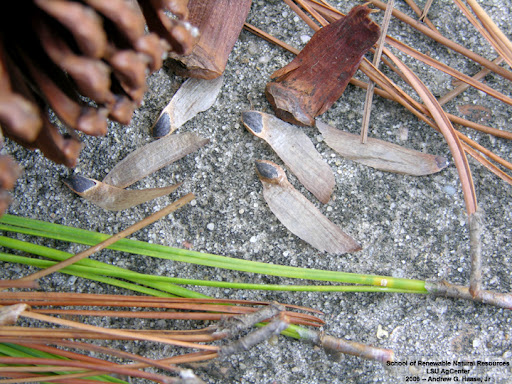 LSU School of Renewable Natural Resources - Andrew G. Haase, Jr. Click on image to enlarge it |
||
| Type: Cone |
Description: Cones are over 5-12 inches in length and over 3 inches in width. Cones dry out, turn brown, and drop seeds. |
Months in Seed: Fall |
|
| Plant spreads by: | |||
| In the fall, cones dry out and release seeds that are dispersed by the wind. The seeds must come in contact with the soil in order to germinate. Historically, natural fires would keep the ground clear from leaf litter, allowing the seeds to easily germinate. Fire prevention tends to allow leaf litter to accumulate on the ground, so when the longleaf seeds are dropped, they do not come in contact with the soil and will not germinate. | |||
| BARK DESCRIPTION |
Longleaf Pine Bark
Lady Bird Johnson Wildflower Center - Albert F.W. Vick Click on image to enlarge it |
|
| Color: Orangish brown, reddish brown |
Texture: Flaky plates; peeling/shredding |
|
| Description: | ||
| As the tree matures, the bark thickens and forms a flaky plate-like structure; the thick bark insulates the inside of the trunk, protecting it from fire | ||
| Plant Life Cycle | |
| Longleaf pine life cycle adaptations for fire: The longleaf pine tree depends on fire for reproduction. They have special adaptations throughout their life cycle that allow them to thrive when fire is present.
Longleaf Pine Life Cycle
The Longleaf Alliance Click on image to enlarge it |
Seedling Stage Lady Bird Johnson Wildflower Center - Alan Cressler Click on image to enlarge it |
|
Grass Stage Flickr - Chris M. Morris Click on image to enlarge it |
|
|
Bottlebrush Stage Lady Bird Johnson Wildflower Center - Patsy Chaney Click on image to enlarge it |
|
|
Sapling Stage Lady Bird Johnson Wildflower Center - Stephanie Brundage Click on image to enlarge it |
|
|
Mature Longleaf Pines Lady Bird Johnson Wildflower Center - Alan Cressler Click on image to enlarge it |
|
ADDITIONAL RESOURCES FOR TEACHERS
| Quick Fact Sheet (Condensed Species Info) |
Plant ID Sign: Ready as-is PDF |
Plant ID Sign: Editable Word Doc |
QR Code (Links to this Webpage) |
INFORMATION SOURCES FOR THIS PLANT
 |
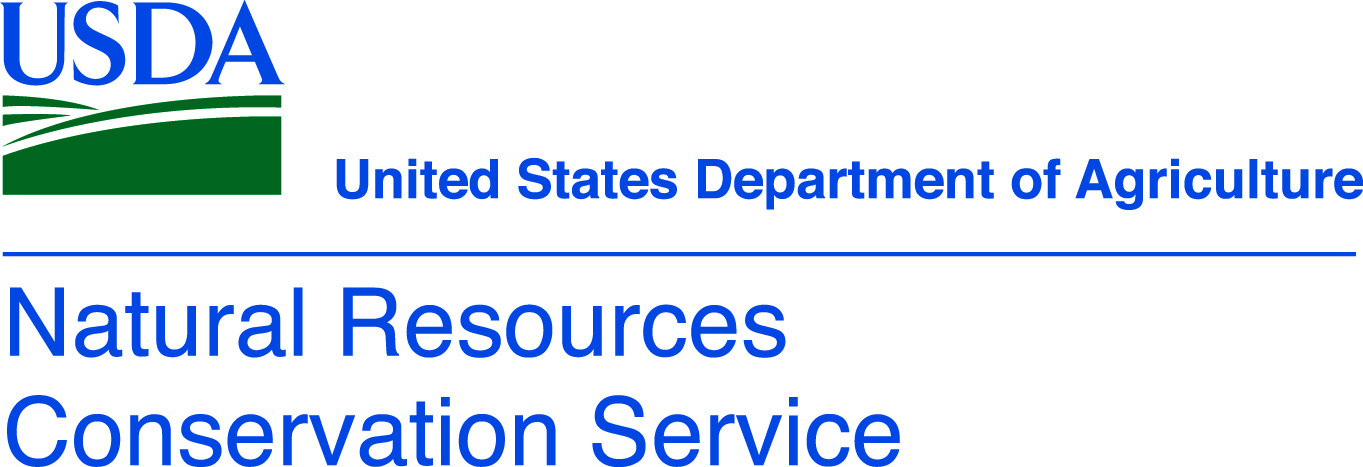 |
|
|
|
||
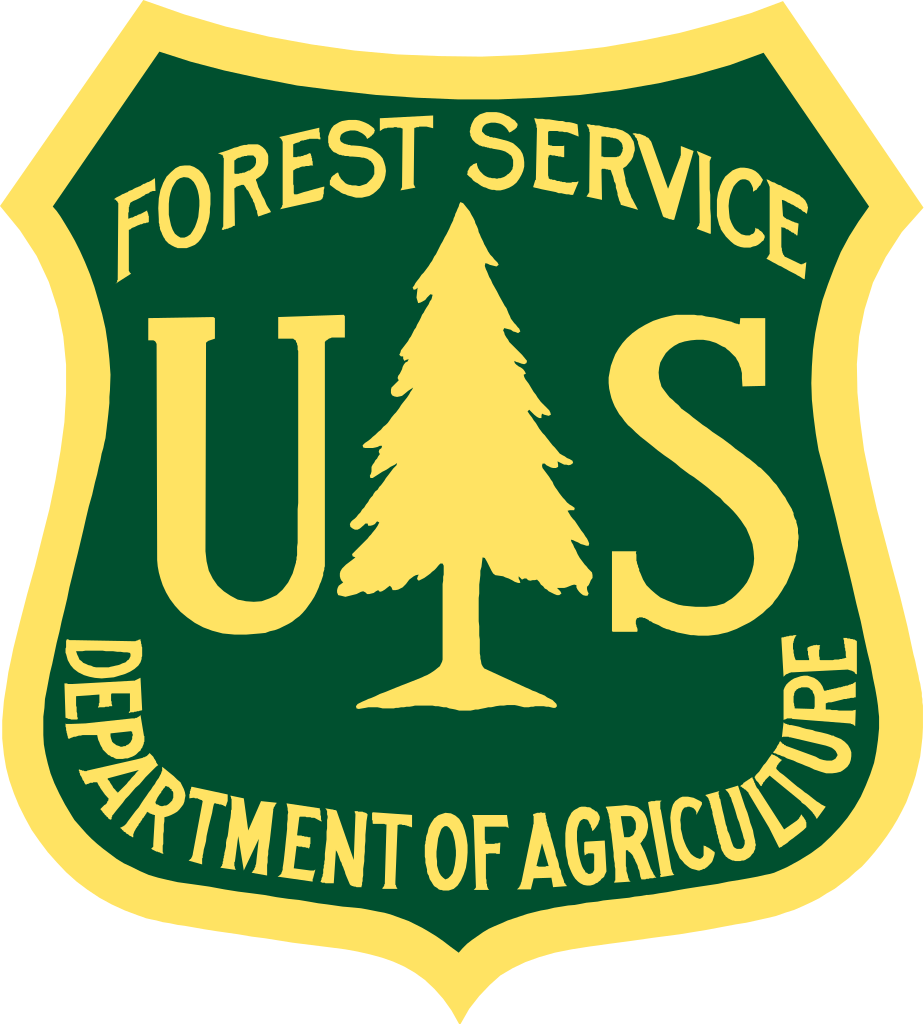 |
 |
.
 Wildlife Tag
Wildlife Tag
